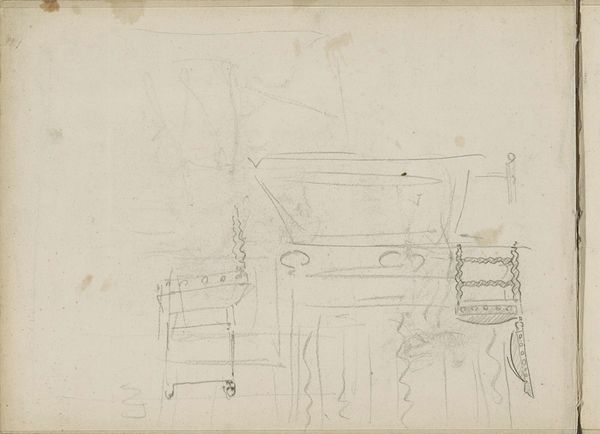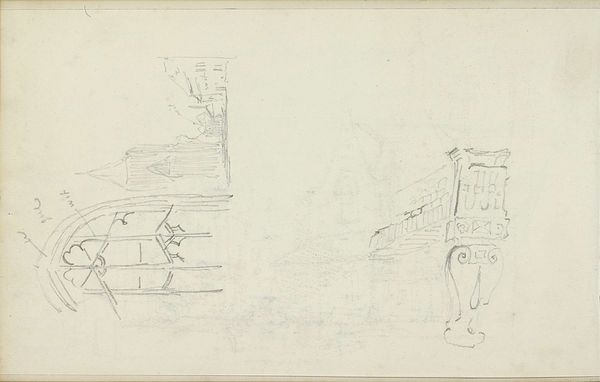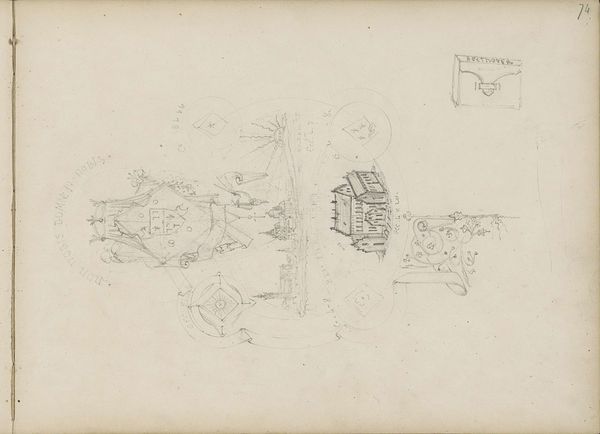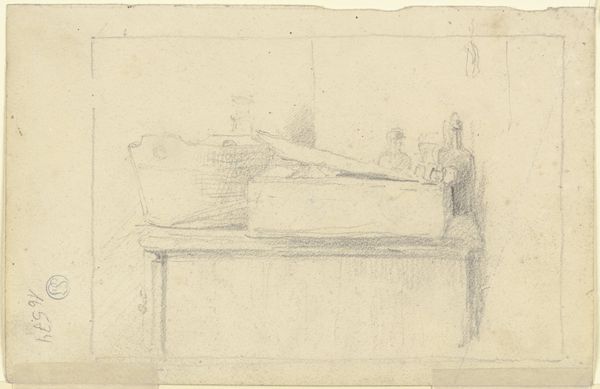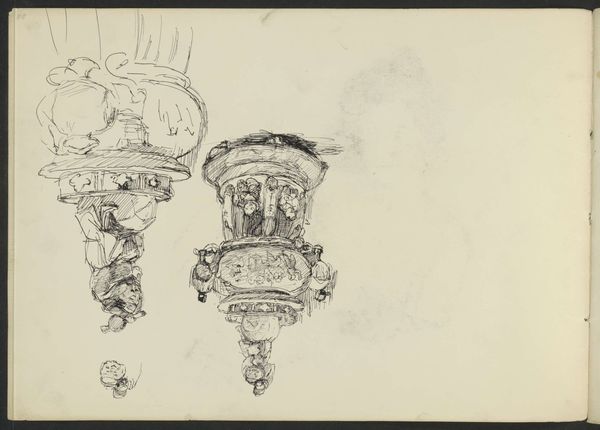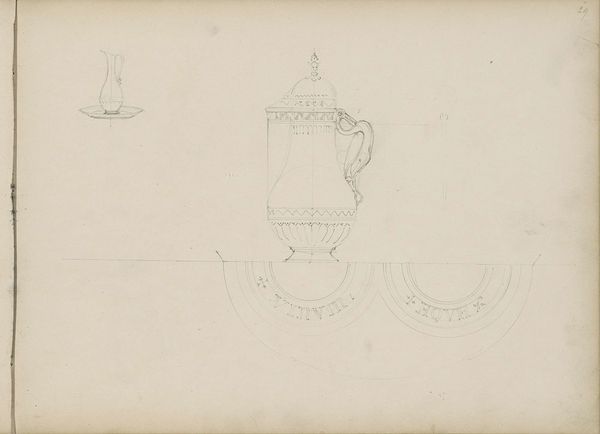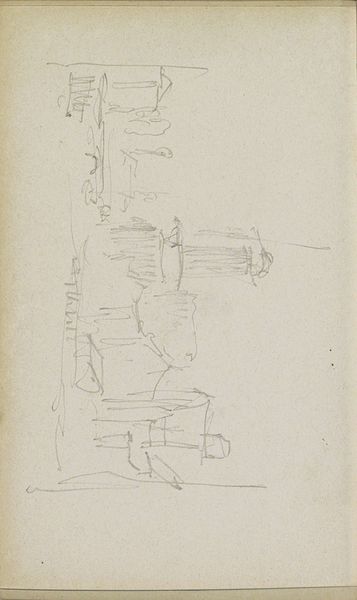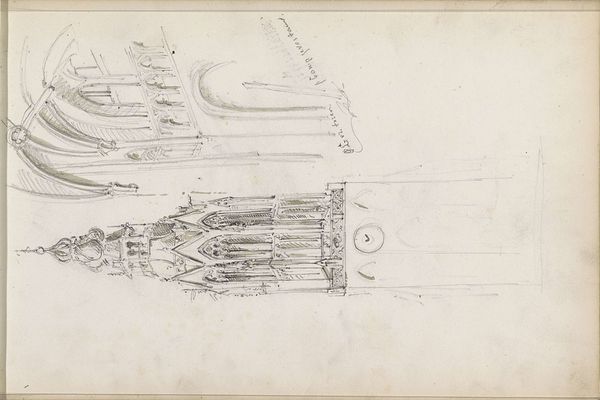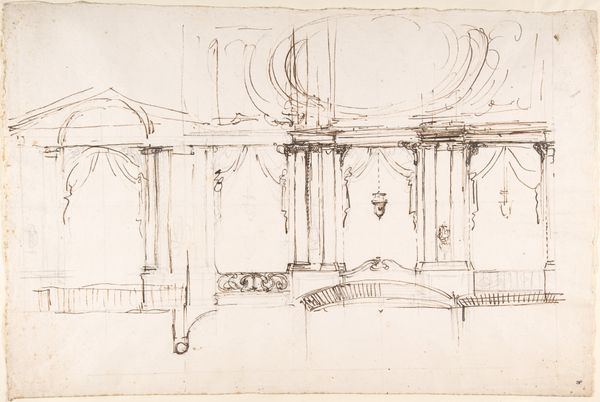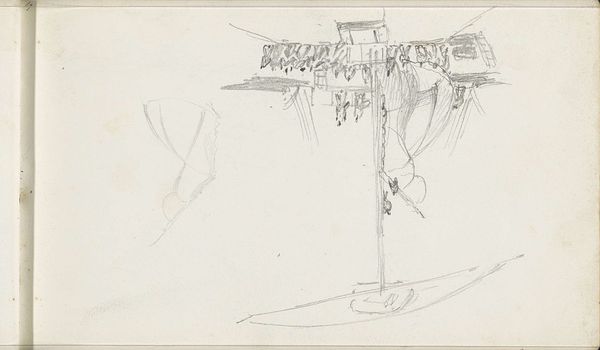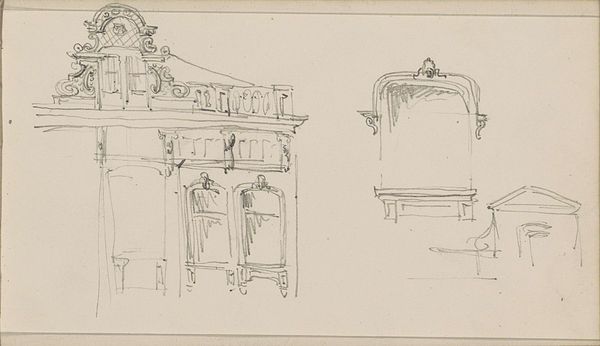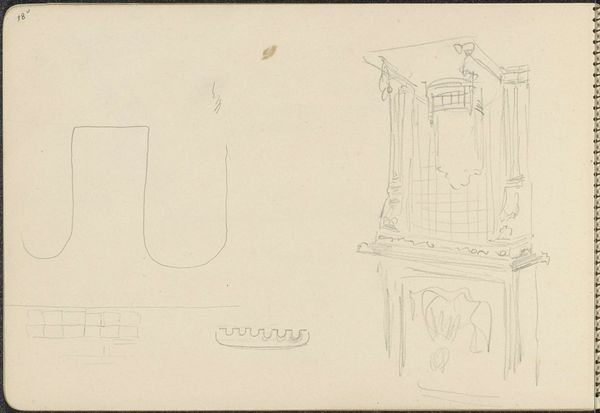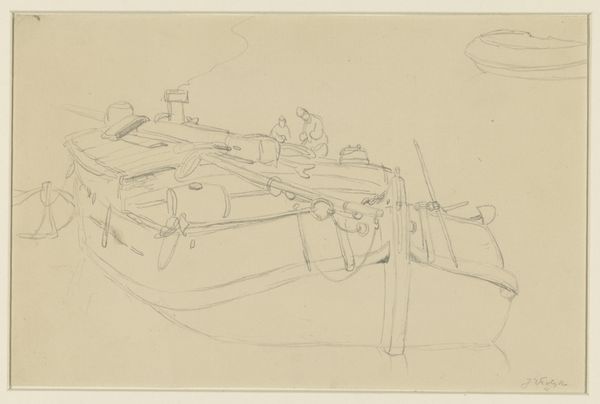
Schetsblad met zadel van Mammeluk en onderdelen Possibly 1854 - 1858
0:00
0:00
drawing, paper, pencil
#
drawing
#
light pencil work
#
quirky sketch
#
pen sketch
#
paper
#
personal sketchbook
#
ink drawing experimentation
#
pen-ink sketch
#
pencil
#
sketchbook drawing
#
storyboard and sketchbook work
#
sketchbook art
#
initial sketch
Dimensions: height 164 mm, width 252 mm
Copyright: Rijks Museum: Open Domain
Curator: We're looking at a sketch by Auguste Raffet, titled "Schetsblad met zadel van Mammeluk en onderdelen," which roughly translates to "Sketch sheet with Mamluk saddle and components." It's believed to have been made between 1854 and 1858. Editor: My first impression is one of fragmented elegance. The light pencil work lends it a delicate, almost ghostly feel, despite the clear depictions of what appear to be pieces of military equipment. Curator: Indeed. The object, most prominently featured, is a Mamluk saddle, known for its distinctive high pommel and cantle. These saddles were status symbols, adorned with elaborate decoration, which Raffet meticulously details. Note how he uses the medium to capture the ornate swirling patterns and geometric inlays. Editor: And these aren’t just surface decorations, are they? The arabesque patterns resonate deeply with Islamic artistic traditions. These intricate designs were rarely just aesthetic choices; they symbolize concepts of divine order and the interconnectedness of all things. Curator: Precisely. Also consider Raffet's choice of positioning various components – stirrups, a scabbard and a harness – floating around the central saddle. It's an anatomical deconstruction. The sketch offers an insight into the design and craftsmanship inherent within each element. This creates a visual rhythm – a dialogue between the object and its individual components. Editor: The sword at the base of the page almost feels like an afterthought, however, it speaks volumes. Beyond a weapon, a sword to the Mamluks represents power, justice, and allegiance to their warrior code. Here, the seemingly casual placement might suggest a shift away from those traditional values, toward a focus on detailed material observation. Curator: An astute observation. In studying this sketch, I'm reminded that line and form carry meaning and can be analyzed systematically, while you illustrate the object’s deeper symbolism to culture and identity. Editor: An approach that helps unlock layers of meaning – an interaction where visual language, cultural memory, and historical contexts blend to illuminate this sketchbook page by Raffet.
Comments
No comments
Be the first to comment and join the conversation on the ultimate creative platform.
